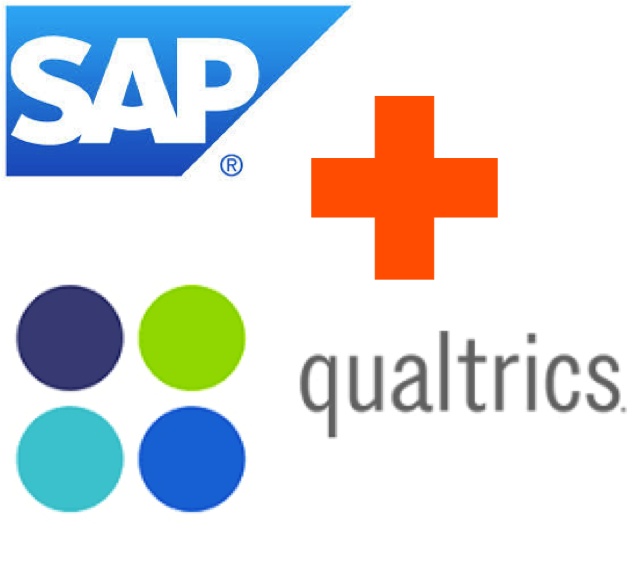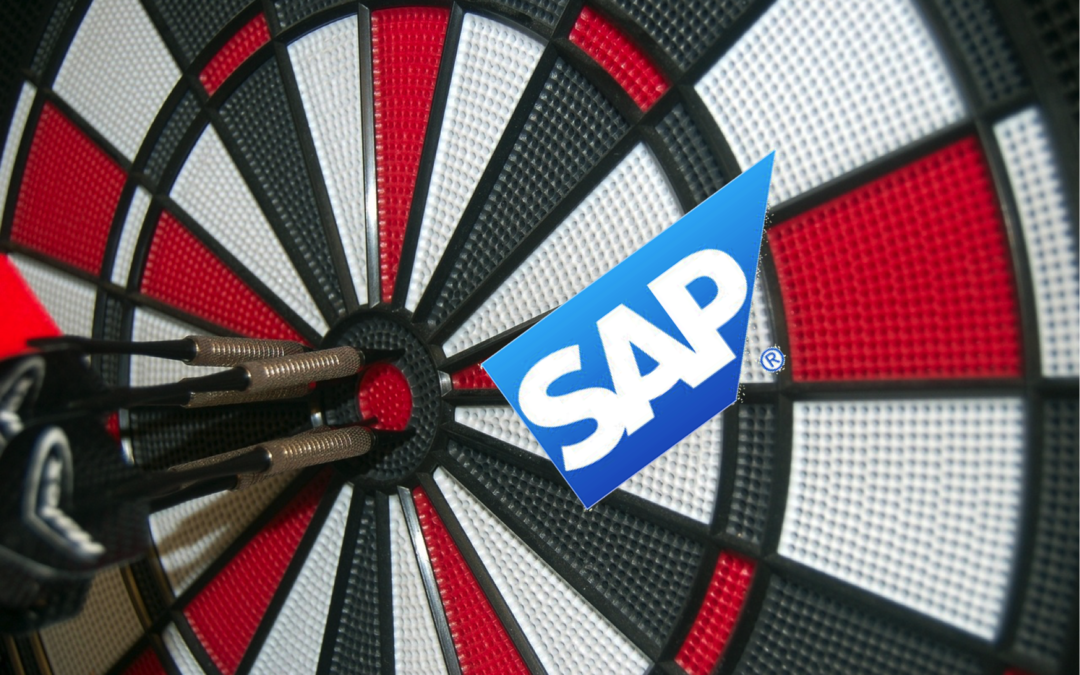
by twieberneit | Nov 13, 2018 | Analysis, Blog |
The News On November 11, 2018 SAP announced that it has entered a definitive agreement to acquire Qualtrics, the “global pioneer of the experience management (XM) software category”. Here is the full announcement for you to read: WALLDORF, Germany, PROVO, Utah, SEATTLE, Wash. — SAP SE(NYSE: SAP) and Qualtrics International Inc. (Qualtrics) today announced they have entered into a definitive agreement under which SAP SE intends to acquire Qualtrics, the global pioneer of the experience management (XM) software category that enables organizations to thrive in today’s experience economy. Together, SAP and Qualtrics to accelerate the new XM category by combining experience data and operational data to power the experience economy Creates a highly differentiated offering for businesses to deliver superior customer, employee, product, and brand experiences Ryan Smith to continue to lead Qualtrics; Qualtrics to maintain dual headquarters in Provo, Utah, and Seattle, Wash. Under the terms of the agreement, SAP will acquire all outstanding shares of Qualtrics for US$8 billion in cash. SAP has secured financing in the amount of €7 billion to cover purchase price and acquisition-related costs. The purchase price includes unvested employee incentive compensation and cash on the balance sheet at close. Subject to customary closing conditions and attainment of regulatory clearances, the acquisition is expected to close in the first half of 2019. The Boards of Directors of SAP and Qualtrics have approved the transaction. Qualtrics’ shareholders have also approved the transaction. SAP CEO Bill McDermott said: “We continually seek out transformational opportunities – today’s announcement is exactly that. Together, SAP and Qualtrics represent a new paradigm, similar to market-making shifts in personal operating systems, smart...

by twieberneit | Oct 10, 2017 | Analysis, Blog |
The News Well, it is already more than two weeks ago that this news hit the wires, but SAP announced the acquisition of Gigya, a leading Customer Identity and Access Management (CIAM) platform vendor. Gigya got placed in the top position of Forrester’s Wave for Customer Identity and Access Management Platforms Q2 2017, a position that is owned by SAP, if the company manages to address customer (and hence analyst) concerns that arise from the merger. SAP, in turn, with its SAP Hybris branded software, provides a suite of commerce and engagement solutions that allow organizations to build and leverage in real time a 360 degree view on the customer, across channels and devices. Gigya is an SAP (Hybris) partner since 2013 or so, and has integrations with SAP Hybris Ecommerce, SAP Hybris Marketing and SAP CRM. SAP intends to make the Gigya platform part of its Hybris portfolio. The transaction is expected to be closed by end of 2017. The Bigger Picture The CIAM market is evolving fast, coming out of the area of providing social logins with the purpose of simplifying web site logins only a decade ago. This purpose remains but along with solving registration problems there are now a lot regulation challenges that are to be addressed. Just think, management of consent and preferences across sites, or GDPR, which imposes data residence requirements on top. With the additional data collection capabilities of CIAM solutions there is quite an upside for CRM vendors – especially for ones with strong marketing automation and profiling capabilities, like SAP. There is an increased ability to accurately address individual customers...

by twieberneit | Jun 20, 2017 | Analysis, Blog |
A while ago Angela Lipscomb from SAS got in touch with me to get me introduced to SAS’s concept of a Customer Decision Hub. Their Customer Decision Hub is a solution concept that shall allow organizations to derive insights and to trigger actions from interactions with external parties, like customers based upon rules and the derived insights. A Customer Decision Hub e.g. orchestrates the determination of Next Best Actions, and allows responding to an incoming request in real time using analysis and decision logic. At the same time standard communications can get suppressed based upon the same set of rules. In other words, the Customer Decision Hub fosters customer engagement based upon inbound signals that get analyzed and processed through the organization. Why is this remarkable, I hear you asking? It is remarkable because SAS Software first of all is an analytics company with a strong reputation for enterprise analytics at the higher end of performance and price point. SAS describes itself on LinkedIn as “the leader in business analytics software and services, and the largest independent vendor in the business intelligence market. Through innovative solutions, SAS helps customers at more than 70,000 sites improve performance and deliver value by making better decisions faster. Since 1976 SAS has been giving customers around the world the power to know®.” SAS is not a company that is widely known for being actively engaged in the customer engagement market (pun intended). So I was intrigued. And so should you be. Finally, a few days ago my somewhat erratic schedule allowed me to have a follow-up with Troy Kusabs of SAS Software in...

by twieberneit | May 4, 2017 | Blog |
Today’s businesses are in a difficult situation. Their customers demand more experience and contextually relevant engagements than they are equipped to deliver. This places them on a difficult trail that they need to navigate in order to be and stay successful. Their challenge is that technology does help everyone, especially their customers, because, also thanks to the consumerization of technology, it is far easier and cheaper for customers to implement and use technologies. Good technology examples of the past decade include the meteoric rise of messaging services and, before that, social media. As a consequence of this today’s customer is less depending on company marketing- or sales organizations and has a far higher reach when it comes to satisfying an information need. Consequently, Google finds that a whopping 99.8 per cent of all online ads are simply … ignored. Sales representatives are on the verge of becoming irrelevant. An increasing number of studies find that customers contact a sales representative only after a product decision has been made. This was a topic that was already discussed during CRM evolution 2016. Other studies determine that customers are abandoning shopping carts already following a single poor service experience. While these studies often are commissioned by vendors there still are too many of them to not indicate that there is a problem. After all there is bound to be a fire where there is smoke. The 1990’s customer was happily working with and believing in corporate messaging that got delivered via unidirectional channels like TV, radio, or the newspaper. Today’s customer uses available technologies and is always online, digitally connected and socially...

by twieberneit | Apr 28, 2017 | Blog |
Just on may way back from CRM evolution 2017 it is time for a little recap. The conference, once more chaired by CRM Grandmaster Paul Greenberg, was again co-located with sister conferences Customer Service Experience and Speechtek. Why there is a separate – and smaller – conference for Customer Services co-located with a CRM conference is beyond me, as Customer Service is an integral part of CRM. But be it as it is. CRM Evolution attracted around 500 professionals, being second to Speechtek. The main topics this year seemed to be Customer Engagement, Customer Experience, and AI, nothing of this coming as a surprise. The size ratio of the conferences and the topics were also confirmed by the exhibitors in the Customer Solutions Expo. We saw an abundance of little booths with AI- and bot-vendors. The mainstays of CRM had fairly small presences, notably SugarCRM, which had a big presence last year. Both keynotes dealt with delivering to maximize customer experience and to measure the result. In the opening keynote Gerry McGovern answered the question what great customer experience is in a digital world and then how to measure it. His premise is that customers want to get something done and that it therefore is imperative to help them getting it done as fast and easy as possible. That begins with page load times, goes on with simple check-out processes like Amazon’s famous one-click or Uber’s payment process – hint there is none at the end of the ride. Things are as easy as saying good-bye to the driver and opening the door. Throughout his keynote Gerry made the...






